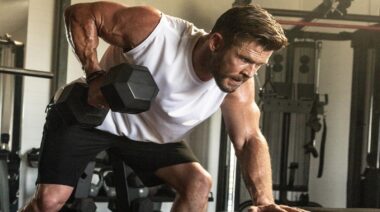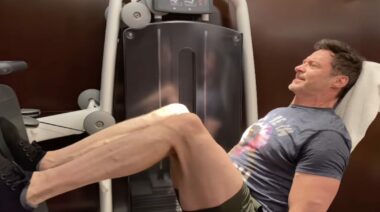In my previous article, How to Master the Kettlebell Jerk, I explained how to perform the kettlebell jerk properly using the base of a solid rack position. Now it’s time to look at the tsar of kettlebell lifts: the snatch. Beautiful to watch when performed correctly, the snatch requires patience, time, and consistent practice to become proficient in its performance.
In my previous article, How to Master the Kettlebell Jerk, I explained how to perform the kettlebell jerk properly using the base of a solid rack position. Now it’s time to look at the tsar of kettlebell lifts: the snatch. Beautiful to watch when performed correctly, the snatch requires patience, time, and consistent practice to become proficient in its performance.
The Most Technical Lift in Kettlebell Sport
The snatch is the second lift performed in the biathlon and is the only lift contested in the women’s division at international level competition. Being by far the most technical lift in kettlebell sport, beginners often struggle with the snatch.
There are hundreds of possible variations and tweaks to the snatch technique. That said, there are some basic principles recognizable in every successful lifter’s technique. If you want to be able to snatch properly, lasting the full ten minutes with just one hand change as required by the sport’s rules, you need learn these principles until they feel like second nature. Only then should you start to try out technique variations to create your own unique style.
The snatch can be broken down into six technical stages. Let’s take a closer look at each one and go over some technique cues for each.
The 6 Technical Stages of the Kettlebell Snatch: 1. Swing
The swing is what I call the “Zen” moment. (Photo courtesy of Andrew Bellamy)
Let the kettlebell swing between your legs, bending at the hip and keeping your lumbar spine straight. Keep your thoracic spine and arm as relaxed as possible. Let the bell travel back until it reaches the “dead point”, where it cannot go any further. Make sure your weight is distributed mainly on your forefeet. At this point, your knees should be just shy of locking out.
This is what I call the “Zen” moment, because you need to calmly resist the instinct to react to the bell and smash it back upwards. Wait a fraction of a second longer, until the bell starts falling forwards. Follow the path of the bell, let your knees unlock, raise your torso upwards, and shift your bodyweight from your forefeet to your heels.
The 6 Technical Stages of the Kettlebell Snatch: 2. Pull
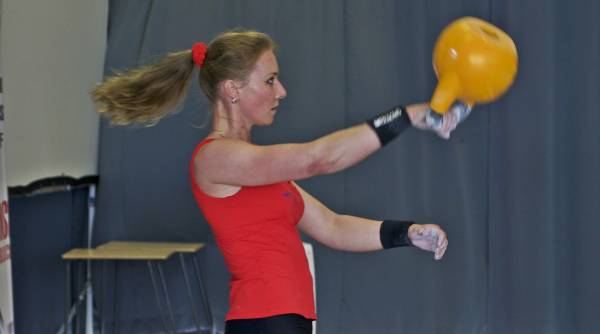
The bell should feel nearly weightless in the pull. (Photo courtesy of Andrew Bellamy)
As your torso moves upwards coming out of the swing, imagine you are on the dial of a clock. The bell will pass your knees and eventually find itself where 7 o’clock is on the dial. Here, initiate your pull phase: move your body back, shifting your weight almost entirely onto your heels, and straighten your knees.
At this point, the bell should reach chest height and feel nearly weightless. Pull your shoulder up and back, keeping the arm itself relaxed with the elbow soft. To emphasize this, one cue I give my athletes is to think of their arm as a rope attached to the kettlebell.
The 6 Technical Stages of the Kettlebell Snatch: 3. Insertion
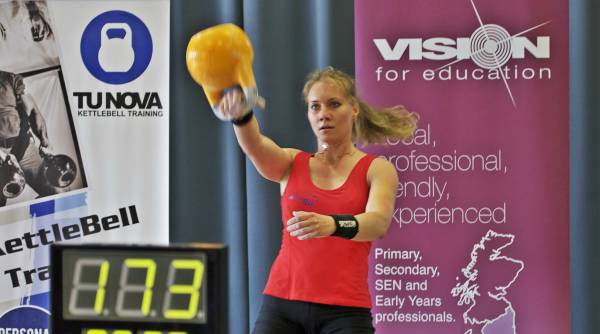
Insertion happens when the clock hands on your dial are pointing to 11 o’clock. (Photo courtesy of Andrew Bellamy)
Insertion is where your hand inserts into the kettlebell and the bell lands on your forearm. After the pull, the bell and your arm are travelling toward the overhead position on your imaginary clock. The insertion happens when the clock hands are pointing to 11 o’clock.
Make sure you’re not gripping the kettlebell handle too tight throughout the swing and the pull. Your grip should have your thumb closing over your index finger. This will allow the bell to move without creating friction on the skin of your palm and land without hitting your forearm too hard.
The 6 Technical Stages of the Kettlebell Snatch: 4. Fixation
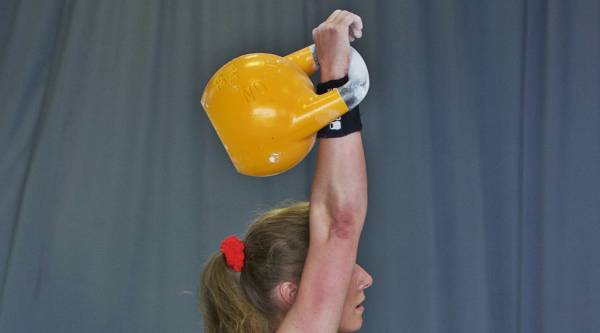
The kettlebell handle should be resting diagonally on the palm of the hand. (Photo courtesy of Andrew Bellamy)
In fixation the kettlebell ends its upward journey, stopping in the overhead position. The lifter’s arm should be straight, with the elbow locked out. If the insertion phase has been properly executed, in fixation the kettlebell handle will be resting diagonally on the palm of the hand. Your legs should be relaxed, with no tension held in the quadriceps.
Think of letting your knee caps drop. This is important, as the overhead position is the only point you can get a brief rest and unwanted tension in the legs hinders this. To understand leg relaxation, it’s useful to do a few sets in front of a mirror and look for the “quad wobble” that happens when appropriate leg relaxation is achieved.
The 6 Technical Stages of the Kettlebell Snatch: 5. Drop
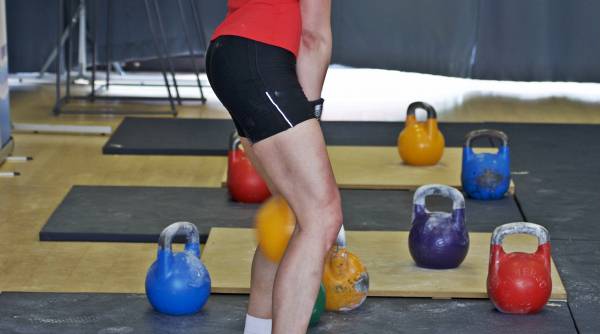
The drop phase starts the next rep. (Photo courtesy of Andrew Bellamy)
In the drop, It’s vital not to just flip the kettlebell over the hand and hope for the best, as this will end up in severe forearm fatigue and torn skin on the palms of your hands. Instead, your body should move slightly back, whilst the palm of your hand supinates and the arm relaxes to make the bell fall downwards. Let the bell “travel” along your hand without gripping it too soon.
The 6 Technical Stages of the Kettlebell Snatch: 6. Catch
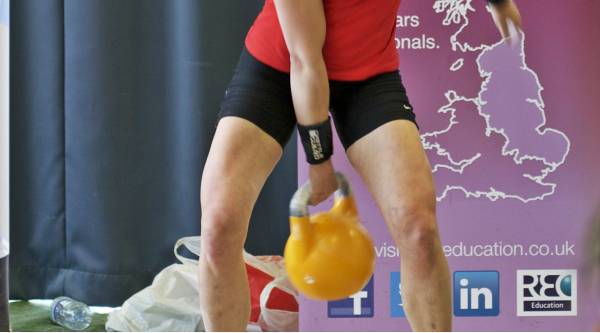
In the catch, the kettlebell should be in the “hook” created by your fingers. (Photo courtesy of Andrew Bellamy)
Catch the bell at about hip level with your arm relaxed and straight. The handle of the kettlebell should end up being held in the “hook” created by your fingers, not in the palm of your hand. The shock is absorbed by your legs with a slight bend at the knees. Finish by moving back into another swing.
Breathe Well to Lift Well
Breathing patterns are essential to survive a ten-minute set in all kettlebell sport lifts, and the snatch is no exception. Let’s take a look at how to breathe during a snatch set.
the optimal kettlebell snatch breathing sequence is:
- Two half-breath exhales on the swing phase, with the first half-breath as the bell reaches back, and the second half-breath as the bell passes the between the legs
- Inhale on the pull phase
- Exhale at the insertion/lockout
- Inhale at the drop/catch
- Repeat for the next repetition.
Remember to keep the breathing controlled so you don’t gas too early in the set. Imagine taking “sips” of air instead of taking massive gulps and forcing the exhalation. Never hold your breath at any point.
Stay Patient In Your Practice
Once these six technical concepts have been understood through consistent drilling, every athlete should work on creating their own unique method of snatching, forging an efficient technique that is built around their unique peculiarities.
Video your sets often. Spend time analysing them and see how your technique stacks up. Above all, stay patient in your practice. The kettlebell snatch can be a very frustrating lift to master, and the only way to do so is through trial and error and constant evaluation of performance.
Make the transition from kettlebell exerciser to kettlebell athlete:


